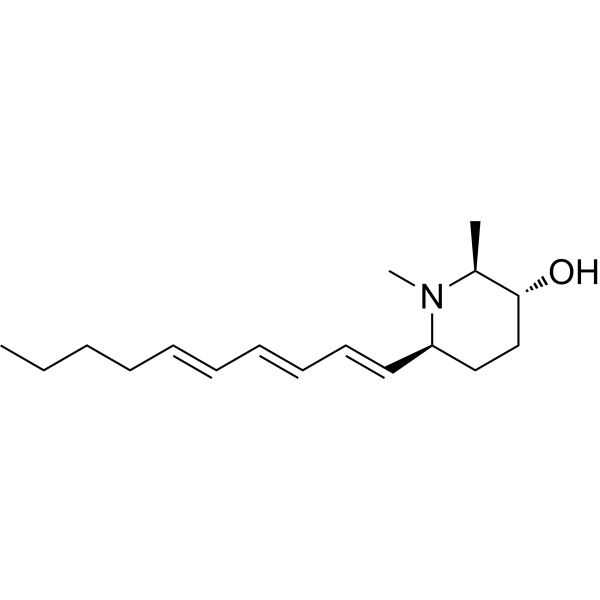
Microgrewiapine A
CAS No. 1420777-30-5
Microgrewiapine A( —— )
Catalog No. M31851 CAS No. 1420777-30-5
Microgrewiapine A is a selective cytotoxic agent for colon cancer cells over normal colon cells and to exhibit nicotinic receptor antagonistic activity for both the hα3β4 and hα4β2 receptor subtypes.
Microgrewiapine A is a selective cytotoxic agent for colon cancer cells over normal colon cells and to exhibit nicotinic receptor antagonistic activity for both the hα3β4 and hα4β2 receptor subtypes.
Purity : >98% (HPLC)
 COA
COA
 Datasheet
Datasheet
 HNMR
HNMR
 HPLC
HPLC
 MSDS
MSDS
 Handing Instructions
Handing Instructions
| Size | Price / USD | Stock | Quantity |
| 5MG | 603 | In Stock |


|
| 50MG | Get Quote | In Stock |


|
| 100MG | Get Quote | In Stock |


|
Biological Information
-
Product NameMicrogrewiapine A
-
NoteResearch use only, not for human use.
-
Brief DescriptionMicrogrewiapine A is a selective cytotoxic agent for colon cancer cells over normal colon cells and to exhibit nicotinic receptor antagonistic activity for both the hα3β4 and hα4β2 receptor subtypes.
-
DescriptionMicrogrewiapine A is a selective cytotoxic agent for colon cancer cells over normal colon cells and to exhibit nicotinic receptor antagonistic activity for both the hα3β4 and hα4β2 receptor subtypes.
-
In Vitro——
-
In Vivo——
-
Synonyms——
-
PathwayOthers
-
TargetOther Targets
-
Recptor——
-
Research Area——
-
Indication——
Chemical Information
-
CAS Number1420777-30-5
-
Formula Weight263.4
-
Molecular FormulaC17H29NO
-
Purity>98% (HPLC)
-
Solubility——
-
SMILES——
-
Chemical Name——
Shipping & Storage Information
-
Storage(-20℃)
-
ShippingWith Ice Pack
-
Stability≥ 2 years
Reference
molnova catalog



related products
-
Pyrolaside B
The herbs of Pyrola calliantha.
-
Schisphenlignan I
Schisphenlignan I.
-
Bragsin2
Bragsin2 is a hydration-resistant cell penetrant, selective and non-competitive inhibitor of Afr guanine nucleotide exchange factor BRAG2.



 Cart
Cart
 sales@molnova.com
sales@molnova.com


